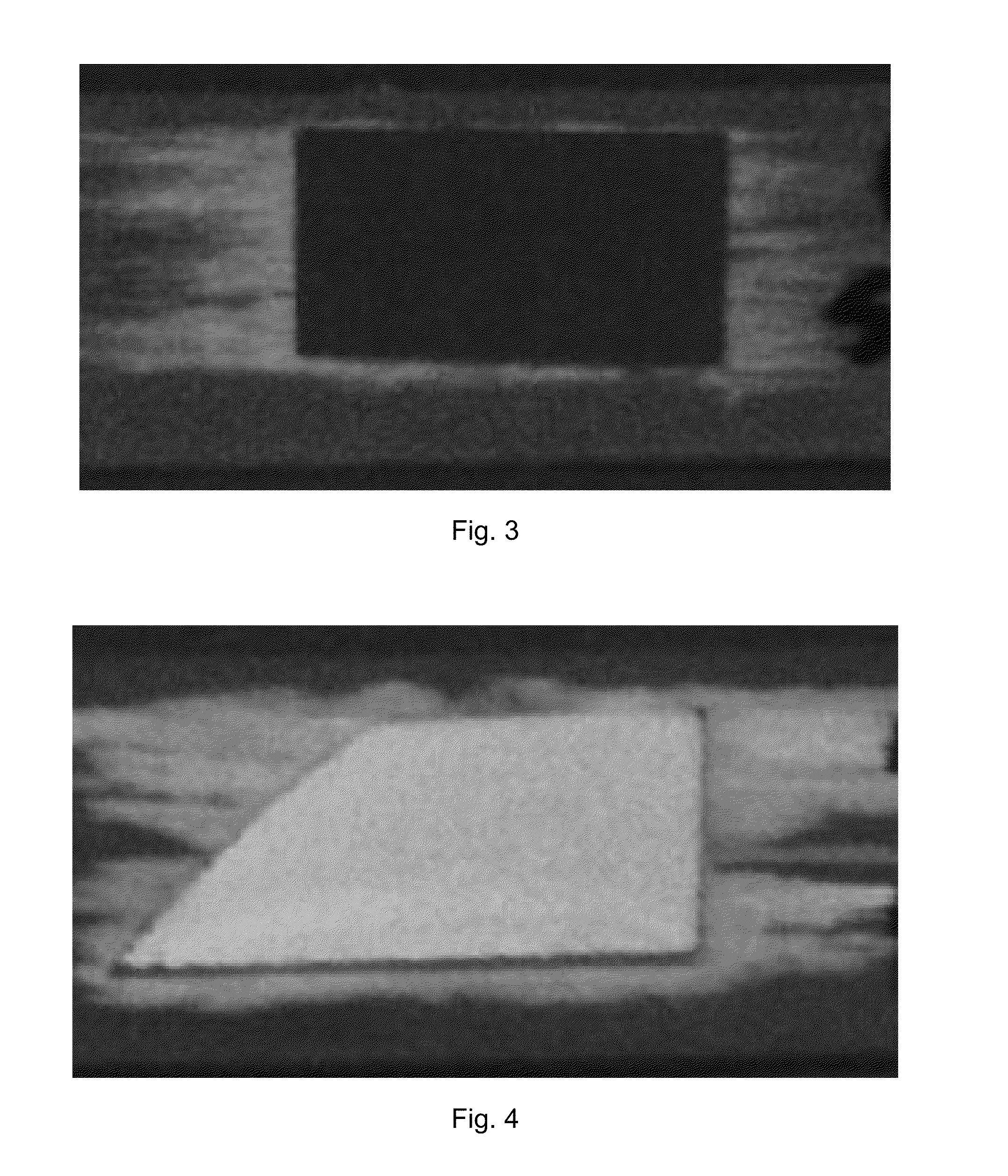Chemical sensitivity screening test
a chemical sensitivity and screening test technology, applied in the field of chemical sensitivity screening test, can solve the problems of drug, cosmetics and food sensitivity, intolerance or allergy to chemical substances, difficult to predict for any given individual, and difficult to predi
- Summary
- Abstract
- Description
- Claims
- Application Information
AI Technical Summary
Benefits of technology
Problems solved by technology
Method used
Image
Examples
example 1
Screening Composition 1
[0146]The baseline formulation “A” is prepared by mixing the listed ingredients according to the method described below in example 3. The quantities and concentrations are shown as the preferred quantity / concentration, and over a range of quantities and concentrations.
TABLE 1Baseline for Positive Charge Strip Test “A” (for 100 ml of solution)IngredientQuantityConcentrationGram's iodine93.50 mlIodine 0.33% (w / v) and potassiumsolutioniodide 0.66% (w / v) in waterAntimony0.03 g0.03% w / voxide0.026 g-0.034 g0.026% w / v-0.034% w / vMagnesium0.06 g0.06% w / voxide0.05 g-0.07 g0.05% w / v-0.07% w / vPotassium0.10 g0.10% w / vcarbonate0.09 g-0.10 g0.09% w / v-0.10% w / vMagnesium0.09 g0.09% w / vcarbonate0.08 g-0.10 g0.08% w / v-0.10% w / vLead oxide 0.11 g0.11% w / v(IV)0.09 g-0.13 g0.09% w / v-0.13% w / vBoric 0.06 g0.06% w / vanhydride0.05 g-0.07 g0.05% w / v-0.07% w / vNickel 0.10 g0.10% w / voxide (II)0.09 g-0.11 g0.09% w / v-0.11% w / vGallium 0.03 g0.03% w / voxide (III)0.026 g-0.034 g0.026% w / v-0.034% w...
example 2
Preparation of Test Strip Solid Phase Layer
[0147]
TABLE 3Ethanol and silica solutionIngredientQuantityConcentrationEthanol250 ml100% vol / volSilica gel1.1 g1.1% w / vol0.95 g-1.25 g 0.95% w / v-1.25% w / v
[0148]The ethanol and silica gel solution described above in table 3 is left to rest at room temperature, and a Whatman™ Qualitative Filter Paper Grade 3 (e.g. CAT No. 1003-110 or No. 1003-090) is allowed to soak for at least four hours. When the soaking time is complete, the treated filter paper is removed and left to dry. After the filter is dried, the excess silica gel is brushed or blown off the filter paper.
[0149]After complete drying the filter paper, or strips cut therefrom may be used for screening purposes.
example 3
Preparation of the Screening Formulation
[0150]The chemicals in Table 1 and Table 2 are put together in the listed, sequential order disclosed above. Group A and B chemicals are mixed separately in a 250 ml beaker or equivalent container. Stirring of the solution is kept on, such that each new chemical added to the solution is immediately stirred and mixed with the other as it is added. After the chemicals have been mixed in sequential order, helium gas is added bubbled through the solution by barbotage for a period of 20 to 30 seconds. After the helium gas has been added, the mixture is stirred and is then placed under plant light {blue light [e.g. (˜425-450 nm wavelength)] 75 W indoor plant light bulb or equivalent) to facilitate the homogenous mixing of the chemical mixtures and reaction together. This process involving the plant light takes approximately 10 to 15 minutes, after the solution is removed from the plant light.
[0151]When the chemicals of Group A and Group B have been ...
PUM
| Property | Measurement | Unit |
|---|---|---|
| Fraction | aaaaa | aaaaa |
| Fraction | aaaaa | aaaaa |
| Fraction | aaaaa | aaaaa |
Abstract
Description
Claims
Application Information
 Login to View More
Login to View More - R&D
- Intellectual Property
- Life Sciences
- Materials
- Tech Scout
- Unparalleled Data Quality
- Higher Quality Content
- 60% Fewer Hallucinations
Browse by: Latest US Patents, China's latest patents, Technical Efficacy Thesaurus, Application Domain, Technology Topic, Popular Technical Reports.
© 2025 PatSnap. All rights reserved.Legal|Privacy policy|Modern Slavery Act Transparency Statement|Sitemap|About US| Contact US: help@patsnap.com



